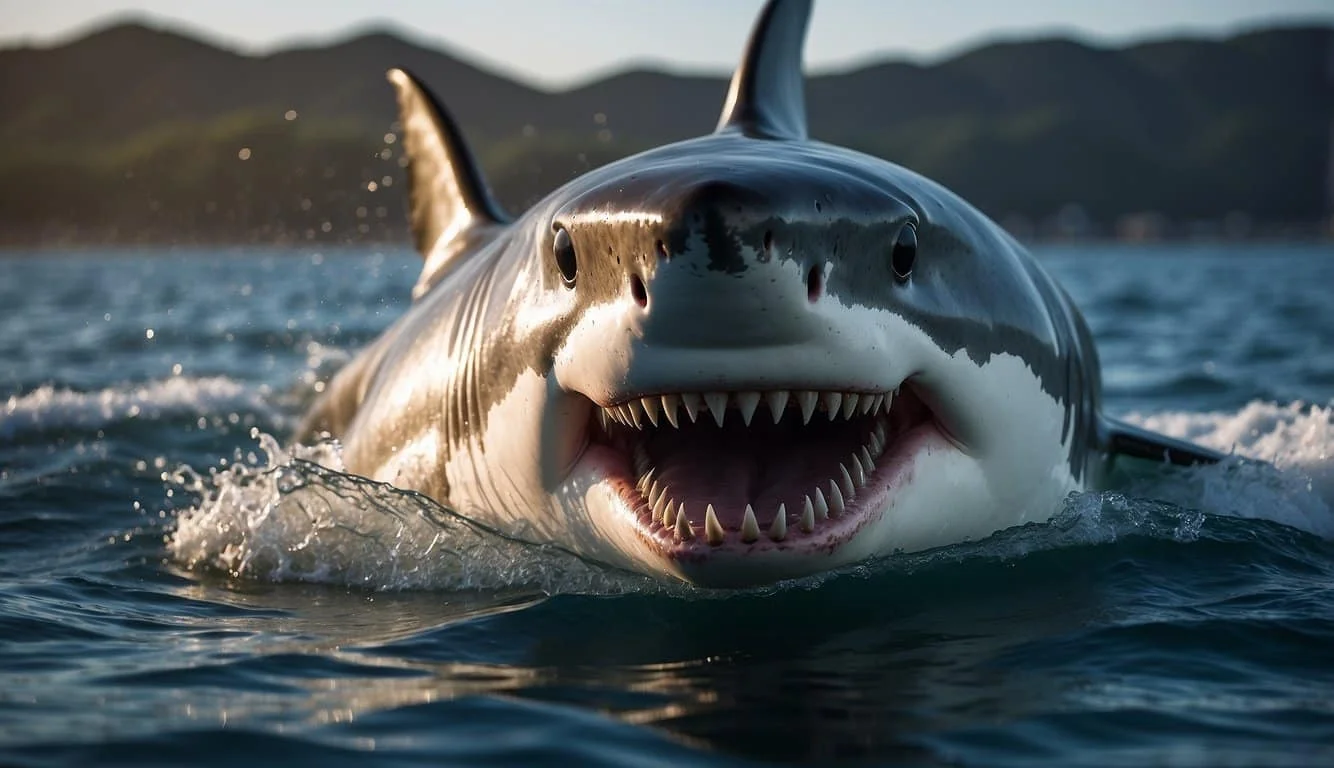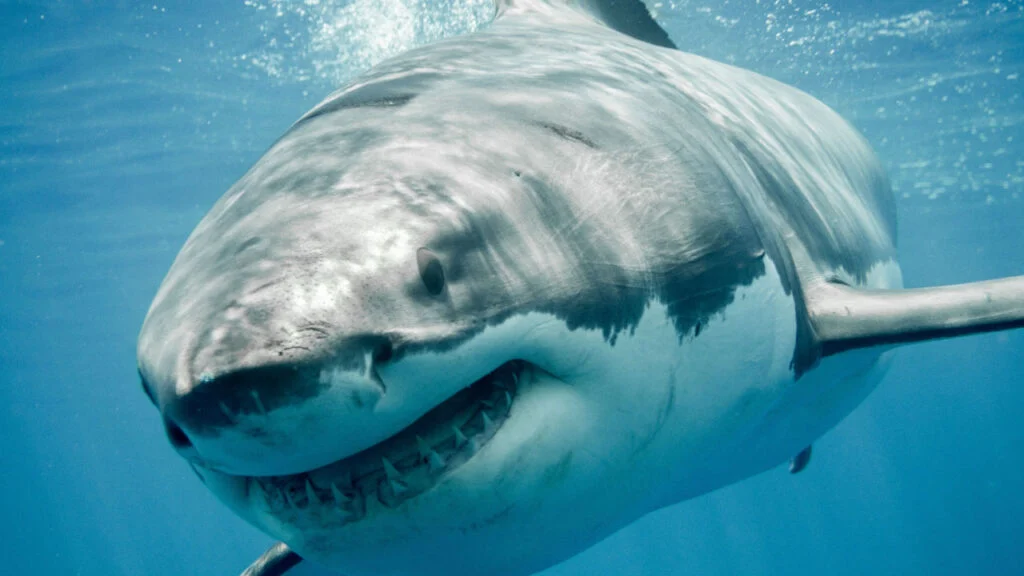Great white sharks belong to the family Lamnidae, which includes other species such as porbeagle, salmon, and mako sharks. These sharks are often referred to as mackerel sharks, and the great white gets its name from its distinctive white belly. The top of the shark’s body is grey or brown, which helps it blend with the ocean depths, while the white belly camouflages it against sunlight from above.
This coloration is a key part of its hunting strategy, allowing it to remain unnoticed by prey. Additionally, scientists have found that melanocytes, special cells in the shark’s skin, may allow it to change its coloration slightly, further enhancing its ability to remain concealed before attacking.
Great white sharks are known for their large, powerful bodies. They can grow up to 6.4 meters in length and weigh more than 2,000 kilograms. Their bodies are streamlined, with a conical snout, large triangular dorsal fin, and a lunate caudal fin that aids in their powerful swimming.
Their most iconic feature is their sharp, triangular teeth, which are perfectly designed for gripping and tearing into prey. These sharks are found in a wide range of oceans, from temperate to tropical waters, and can dive to depths of 1,200 meters. They regulate their body temperature to adapt to a wide range of water temperatures, making them versatile hunters.

Great white sharks are apex predators, capable of reaching high speeds of up to 50 kilometers per hour when pursuing prey. They are ambush predators, often breaching the surface of the water to capture their prey with a powerful bite. Their diet consists mainly of marine mammals such as seals and dolphins, but they also consume seabirds, turtles, and even the carcasses of other animals.
Their acute sense of smell allows them to detect prey, like a seal colony, from several kilometers away. Despite their fearsome reputation, most shark attacks on humans are cases of mistaken identity, and unprovoked fatal attacks are quite rare.
Great white sharks can live for up to 73 years, with females maturing around the age of 33. Reproduction occurs through internal fertilization, and females give birth to between two and 17 pups after a gestation period of approximately 12 months.
These pups are independent hunters from birth. Recent research has provided new insights into their breeding habits, including the first sighting of a possible live newborn great white shark in January 2024. Despite being apex predators, great whites face threats from killer whales, particularly pods that have been observed hunting juvenile sharks.
The global population of great white sharks is believed to be declining, and they are classified as Vulnerable by the International Union for Conservation of Nature (IUCN). Human activities, such as bycatch in fisheries, beach protection nets, and illegal hunting for their fins and jaws, pose significant threats to their survival.
Conservation efforts are in place to protect great white sharks, including international wildlife treaties like the Convention on Migratory Species (CMS) and the Convention on International Trade in Endangered Species (CITES). Conservationists recommend implementing strict catch limits and fully enforcing international treaties to allow the species to recover.

